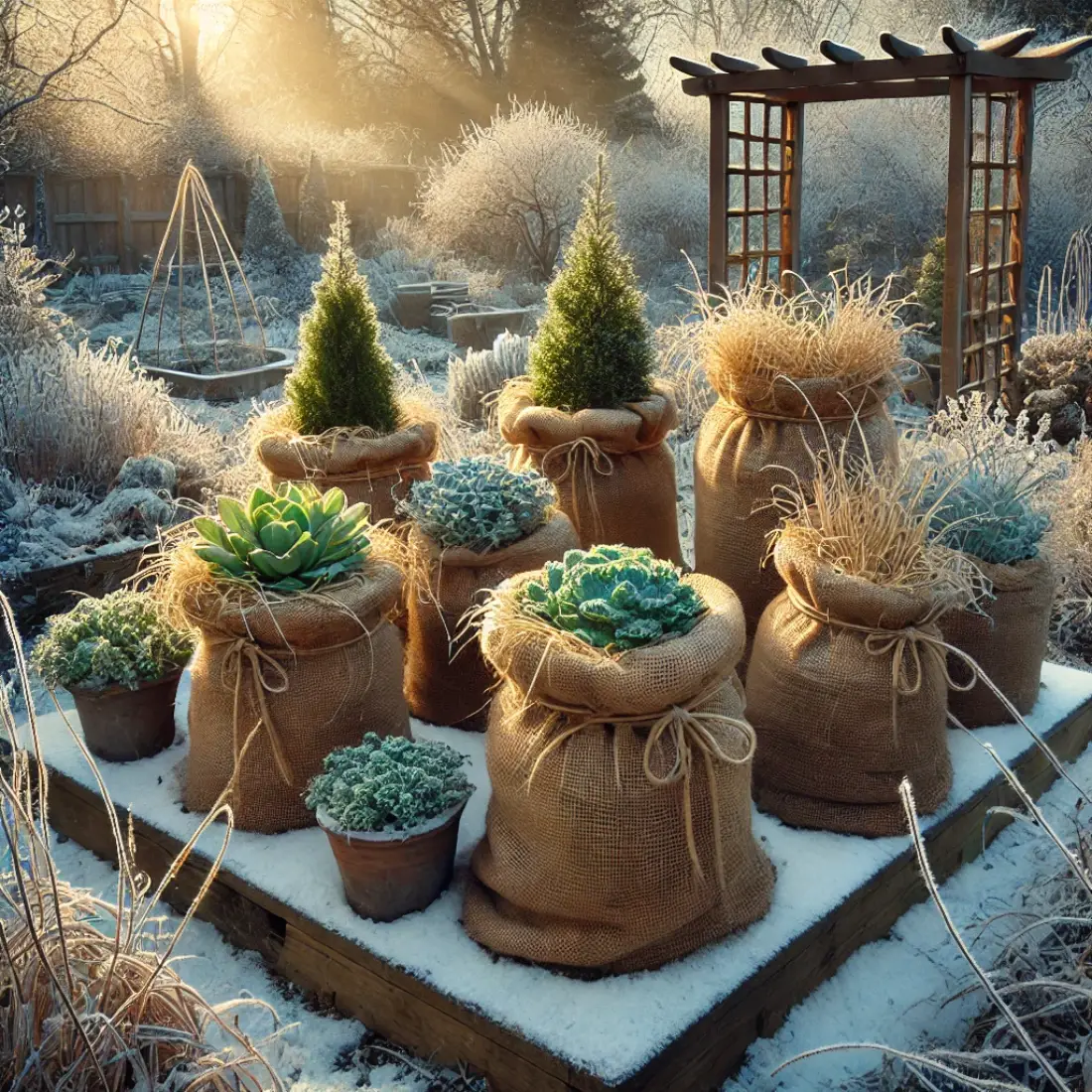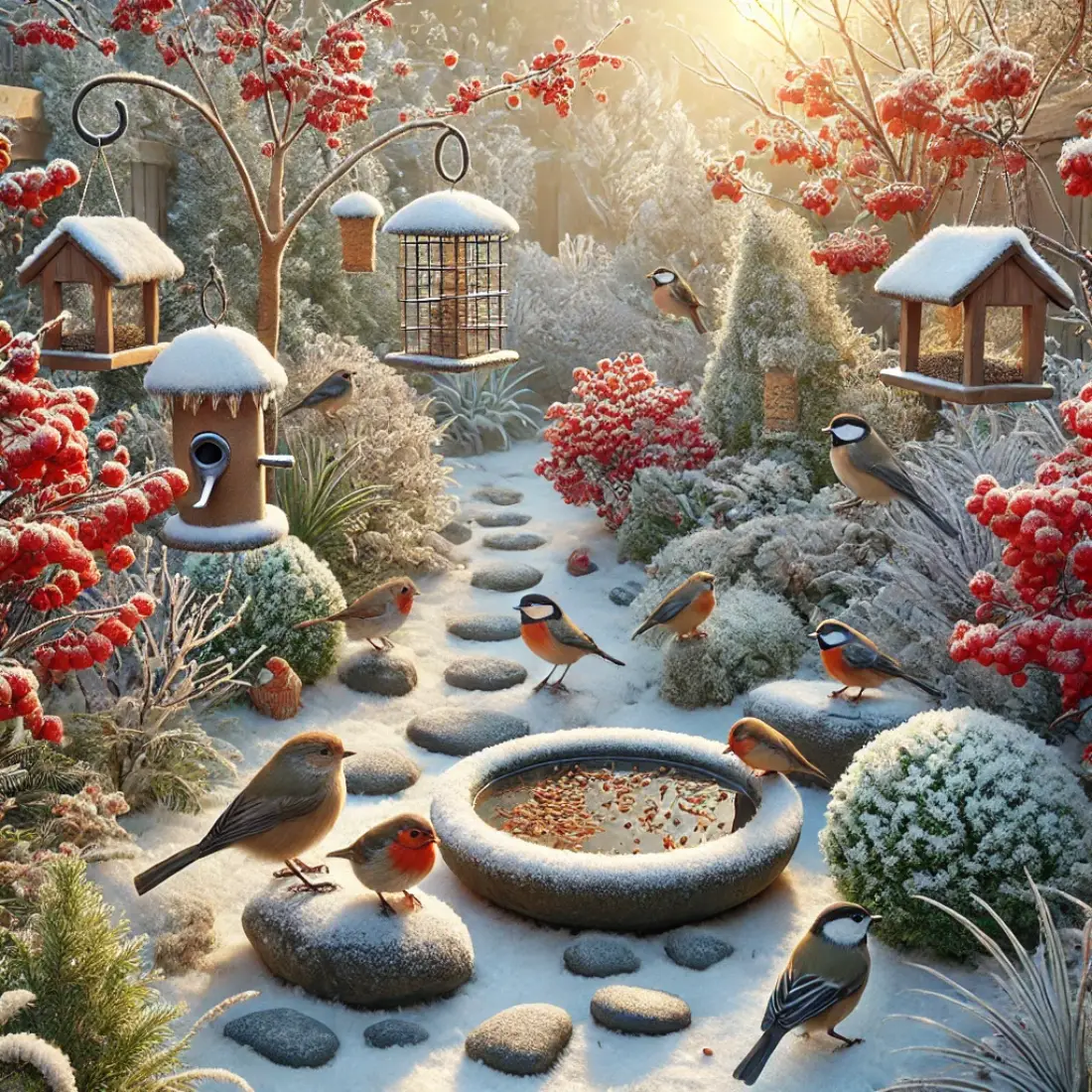Perennials provide structure, color, and beauty to our gardens year after year, but they need a little help to survive winter’s chill. By using organic practices, you can ensure your garden’s backbone plants stay strong and ready to bloom in the spring. Below, we cover the best tips for protecting your perennials and setting your garden up for a successful next season.
- Organic winter prep is essential for long-term garden health.
- Insulating techniques protect plants from frost damage and disease.
- Organic methods nurture soil health and benefit your garden’s ecosystem.
Why Protecting Perennials is Essential for Garden Longevity
Perennials, or plants that live for multiple growing seasons, are central to any garden. Their root systems expand each year, adding stability and depth to your garden design. Without winter protection, these hardy plants can suffer from frost, freezing temperatures, and harsh winds. By taking a few steps to insulate and care for them, you’re not only safeguarding their survival but also promoting vibrant growth when spring arrives.
Winter prep minimizes the risk of frost damage, encourages healthy root systems, and prevents many types of diseases that can emerge when plants are stressed. In short, winterizing perennials helps ensure that they’ll grow back fuller, healthier, and more beautiful next season.
Choosing the Right Organic Methods: An Overview
When it comes to winter prep, organic methods are ideal because they foster natural garden resilience. Organic techniques—such as using natural mulches, compost, and biodegradable wraps—enrich the soil, promote healthy microbes, and maintain a balanced garden ecosystem without introducing chemicals. Using organic materials, from shredded leaves to burlap, helps your perennials while keeping the environment healthy.
Step-by-Step Organic Tips for Winterizing Perennials
Cut Back or Leave Standing?
The decision to cut back perennials largely depends on the plant type. Some perennials, like coneflowers and sedums, have strong stems that offer natural protection from the cold. Leaving these standing can help trap snow, which insulates the plant base. However, others may benefit from a clean cut-back to prevent diseases or pest infestations.
When cutting back, use clean, sharp tools and cut stems to about 3-4 inches above the ground. This will reduce risk of disease and make it easier for new growth to emerge in the spring. Using sanitized pruners ensures you won’t transfer diseases from one plant to another.
The Importance of Mulching for Perennial Protection
One of the most effective organic methods to winterize perennials is mulching. Mulch acts as insulation, shielding plant roots from fluctuating temperatures and frost. Organic mulching options include shredded leaves, bark mulch, straw, or compost, which not only insulate but also enrich the soil as they decompose.
Steps to Mulch Your Perennials:
- Wait until the ground has started to freeze to prevent inviting pests into warm, moist soil.
- Apply 2-4 inches of organic mulch around the base of each plant, avoiding direct contact with the stem.
- Spread evenly to create a protective layer that will regulate soil temperature and retain moisture.
This method is simple, but it makes a significant difference in keeping perennials safe through winter’s harshest days.
Organic Insulation: Using Burlap, Straw, and Other Natural Materials

For particularly tender perennials, adding insulation with organic materials can help shield them from extreme cold. Burlap wraps and natural straw coverings work well for protecting the most delicate plants, especially in areas with heavy snowfall or intense frost. Avoid using synthetic materials, as they can restrict airflow and trap moisture, leading to root rot.
To wrap with burlap, gently tie it around the base of your plant or cover low-growing perennials lightly with straw. Be careful not to create too tight a seal—your plants still need air circulation to prevent mold growth.
Watering Perennials Before Winter: Why and How
Proper watering is essential before winter, but it’s easy to overdo it. Water your perennials deeply before the ground freezes to ensure they have the moisture they need throughout winter dormancy. This step helps prevent dehydration, which can weaken plants as they go into their rest period.
Watering tips:
- Water on a mild day when temperatures are above freezing.
- Aim for about 1-2 inches of water, avoiding waterlogged soil that can cause root rot.
Organic Winter Protection for Specific Perennial Types
Protecting Herbaceous Perennials Organically
Herbaceous perennials die back to the ground each winter, but their roots stay active underground. Plants like hostas and daylilies benefit from an extra layer of compost or mulch to keep the soil temperature stable. Compost acts as a natural insulator while also enriching the soil for spring. For these plants, cut back the foliage after the first frost, then mulch generously around the base.
Shielding Woody Perennials from Winter Damage
Woody perennials, such as lavender and Russian sage, have above-ground woody structures that persist through winter. These plants benefit from mulching around the base and sometimes a burlap wrap to prevent frost cracks or dieback. Wrapping delicate branches with burlap or using a light coating of organic antifreeze spray can also reduce the chances of damage.
Preparing Tender Perennials for Cold Winters
Tender perennials, such as dahlias and cannas, require extra care in colder zones. These plants won’t survive harsh frosts, so if temperatures drop below their tolerance, consider digging them up and storing them indoors. If keeping them in pots, move them to a sheltered area or cover them with cloches for extra warmth.
Additional Organic Care Tips for Healthier Spring Blooms
The Benefits of Late Fall Fertilizing with Natural Compost
Late fall is an ideal time to apply natural compost to your perennials. Adding compost around the base of each plant provides a steady release of nutrients that feeds the roots through winter, improving the soil and boosting spring growth. Spread 1-2 inches of compost evenly around each perennial to create a nutrient-rich foundation that supports next season’s blooms.
Avoiding Common Mistakes in Winterizing Perennials
Even seasoned gardeners can make mistakes when winterizing. Here are common errors and how to avoid them:
- Over-mulching: Excess mulch can trap too much moisture, leading to rot. Stick to 2-4 inches.
- Cutting back too early: Avoid trimming before the first frost to prevent unnecessary stress.
- Improper watering: Too much water can lead to soggy roots; water deeply but sparingly before freezing temperatures hit.
Springtime Checkup and Recovery Tips
Removing Mulch and Assessing Perennials After Winter
When spring arrives, gently remove any heavy mulch layers and inspect each perennial for signs of winter damage. Look for browning, wilting, or signs of disease on leaves and stems. If you spot damage, trim away affected areas and apply a gentle compost layer to help recovery.
Transitioning from Winter to Spring: Organic Spring Care Tips
Spring brings new growth, but your perennials will need a little time to adjust. Start by gradually exposing plants to sunlight and increasing their watering. Apply a gentle, organic fertilizer after the last frost to support robust spring growth.
FAQs About Preparing Perennials for Winter
How late in the season should I prepare perennials for winter?
Late fall, just before temperatures consistently drop below freezing, is ideal. Avoid starting too early, as plants still need time to naturally adapt.
Is it better to cut back or leave perennials standing over winter?
This depends on the plant type. Some perennials benefit from natural winter exposure, while others are better off cut back to reduce disease risk.
What organic materials work best for mulching perennials?
Shredded leaves, bark mulch, and straw are excellent organic mulches. They insulate plants and decompose over time, enriching the soil.
Can I winterize potted perennials outside?
Move potted perennials to sheltered areas or indoors if possible. You can also wrap pots with burlap for added insulation.









